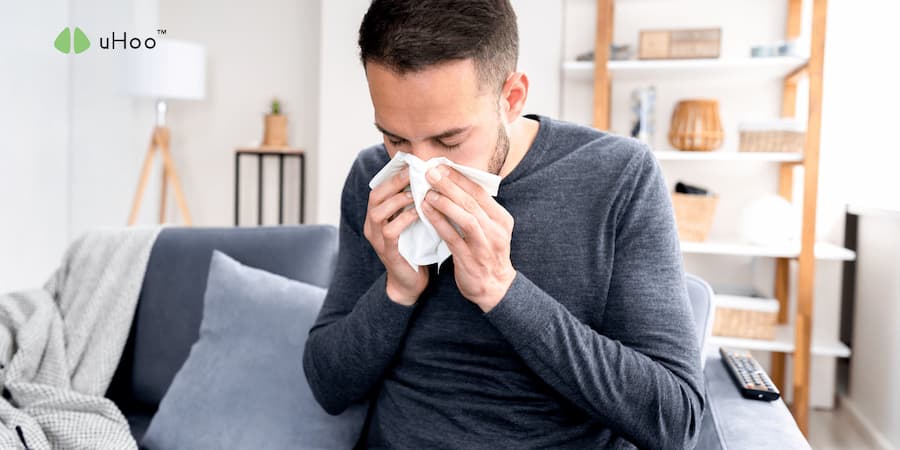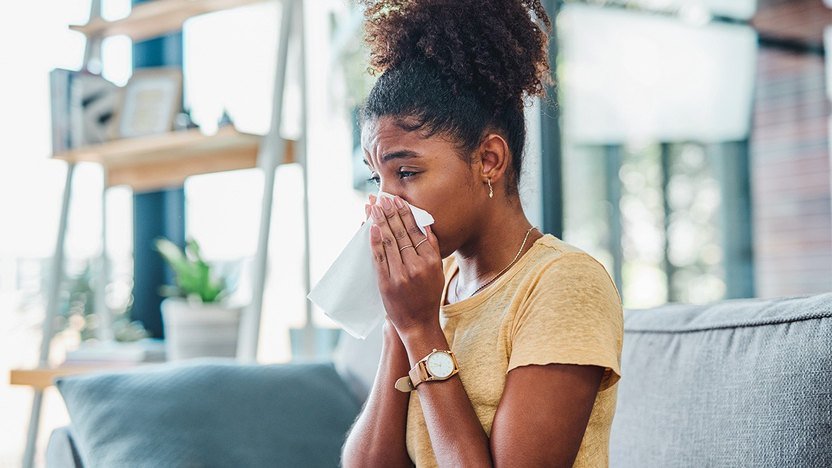Identifying allergens in your home is essential for a healthier life. Start by understanding common allergen sources.
Allergens can hide in unexpected places, affecting your well-being. Dust mites, pet dander, mold, and pollen are some common culprits. Recognizing these allergens can help reduce symptoms like sneezing, itchy eyes, and breathing issues. Simple steps, like proper cleaning and ventilation, can make a big difference.
By becoming aware of potential allergens, you can create a safer and more comfortable living environment. This blog will guide you through the process of finding and addressing these hidden irritants, ensuring your home remains a haven of health and comfort.
Common Household Allergens
Identifying allergens in your home can improve your health. Common household allergens lurk in every room. Recognizing them is the first step to control them.
Dust Mites
Dust mites are tiny creatures. They thrive in warm, humid places. Commonly found in bedding, carpets, and curtains. They feed on dead skin cells. Their droppings trigger allergies. Washing bedding in hot water helps reduce them. Using allergen-proof covers also helps.
Pet Dander
Pet dander consists of tiny skin flakes. Pets like cats and dogs shed it. It can stick to furniture, clothing, and walls. It remains in the air for a long time. Regular grooming and cleaning reduce dander. HEPA filters in vacuums and air purifiers capture it.
Mold Spores
Mold spores grow in damp areas. Bathrooms, basements, and kitchens are common spots. They can cause respiratory issues. Fixing leaks and reducing humidity helps. Using exhaust fans and dehumidifiers also control mold.

Credit: www.sylvane.com
Signs Of Allergens
Identifying allergens in your home starts with recognizing the signs. Allergens can trigger various symptoms, making it essential to be aware of these indicators. Paying attention to your body’s reactions can help you pinpoint the presence of allergens. Below, we discuss some common signs that may suggest allergens are in your home.
Respiratory Symptoms
Respiratory symptoms are common signs of allergens. You might experience sneezing, coughing, or a runny nose. These symptoms are often mistaken for a cold. Shortness of breath and wheezing can also occur. Pay attention to any patterns. If symptoms worsen at home, allergens might be the cause.
Skin Reactions
Skin reactions can indicate allergens. Itching, redness, and hives are common signs. Eczema flare-ups can also suggest allergens. These reactions may appear after touching surfaces or using certain products. Check for any new products or changes in your environment.
Eye Irritation
Eye irritation is another sign of allergens. You might notice redness, itching, or watery eyes. These symptoms can be uncomfortable and persistent. They often occur alongside respiratory issues. Keep an eye out for patterns to identify potential allergens.
Allergen Hotspots
Allergens can lurk in many places in your home. Identifying these allergen hotspots is key to reducing your allergy symptoms. Different rooms can harbor different types of allergens. Let’s explore some common areas where allergens thrive.
Bedroom
Your bedroom should be a place of rest, but it can also be a hotspot for allergens. Dust mites love to hide in bedding and mattresses. Wash your sheets in hot water weekly. Encase your mattress and pillows in allergen-proof covers. Consider using hypoallergenic pillows and blankets.
Carpets and rugs can also trap dust, pet dander, and pollen. Vacuum them regularly with a HEPA filter vacuum. If possible, remove carpets and opt for hard floors. Keep pets out of the bedroom to reduce pet dander.
Living Room
The living room is another allergen hotspot. Upholstered furniture can collect dust, dander, and pollen. Vacuum these surfaces weekly and consider using washable slipcovers. Dust your shelves, electronics, and other surfaces regularly.
Houseplants can improve air quality but can also harbor mold and attract pests. Choose plants that are less likely to cause allergies, like spider plants or peace lilies. Keep your windows closed during high pollen seasons and use air purifiers to reduce indoor pollen levels.
Kitchen
The kitchen can be a breeding ground for mold and other allergens. Mold thrives in moist environments, so check under the sink and around the refrigerator for leaks. Clean your refrigerator regularly and dispose of expired foods.
Keep your countertops and floors clean to avoid attracting pests. Use sealed containers for food storage to reduce the risk of pest infestation. Ventilate your kitchen well when cooking to reduce moisture and cooking fumes that can contribute to indoor allergens.
Inspection Tools
Identifying allergens in your home is crucial for maintaining a healthy living space. Various inspection tools can help you pinpoint allergens and reduce their impact. These tools are easy to use and effective in detecting common household allergens.
Allergen Test Kits
Allergen test kits are designed to detect specific allergens in your home. These kits can identify dust mites, mold, pet dander, and pollen. Most kits come with easy-to-follow instructions, making them user-friendly.
- Collect samples from different areas of your home.
- Send the samples to a lab for analysis.
- Receive detailed reports on the allergens present.
These reports help you understand the types and levels of allergens in your home. This information is valuable for creating an action plan to reduce allergens.
Hepa Filters
HEPA filters are a must-have for reducing airborne allergens. HEPA stands for High-Efficiency Particulate Air. These filters trap particles as small as 0.3 microns.
| Benefits | Description |
|---|---|
| Effective | Captures dust, pollen, and pet dander. |
| Easy to install | Fits most air purifiers and HVAC systems. |
| Improves air quality | Reduces respiratory issues and allergies. |
Place HEPA filters in your air purifiers and HVAC systems to maintain cleaner air. Regular replacement of these filters ensures continuous air quality improvement.
Humidity Meters
Humidity meters help you monitor the moisture levels in your home. High humidity encourages mold growth, which can trigger allergies.
- Place the meter in rooms prone to moisture, like bathrooms and basements.
- Check the readings regularly to ensure humidity stays between 30-50%.
- Use dehumidifiers if levels are too high.
Maintaining the right humidity levels can prevent mold and dust mites, making your home healthier and more comfortable.
Cleaning Strategies
Keeping your home free of allergens is essential for a healthy living environment. Using effective cleaning strategies can significantly reduce allergens in your home. Here are some methods to help you tackle common allergens.
Vacuuming Techniques
Regular vacuuming is crucial. Use a vacuum with a HEPA filter to trap allergens.
- Vacuum carpets at least twice a week.
- Focus on high-traffic areas and under furniture.
- Don’t forget to vacuum upholstery and drapes.
Empty the vacuum bag or dust container outside to prevent allergens from re-entering the home.
Washing Bedding
Dust mites thrive in bedding. Wash your sheets and pillowcases weekly in hot water.
| Item | Frequency | Temperature |
|---|---|---|
| Sheets | Weekly | Hot water |
| Pillowcases | Weekly | Hot water |
| Blankets | Monthly | Hot water |
| Comforters | Quarterly | Hot water |
Use allergen-proof covers on pillows and mattresses to add an extra layer of protection.
Air Purifiers
Air purifiers can help remove allergens from the air.
- Choose a purifier with a HEPA filter.
- Place it in the most used room.
- Run it continuously for the best results.
Keep doors and windows closed while using air purifiers for optimal performance.

Credit: www.apartmentguide.com
Preventive Measures
Identifying allergens in your home is crucial for maintaining a healthy living environment. Preventive measures can help reduce the presence of allergens and improve air quality. By focusing on specific areas, you can significantly decrease the risk of allergic reactions.
Pet Grooming
Regular pet grooming can minimize the amount of dander in your home. Brush your pets outside to keep loose fur and skin flakes from spreading indoors. Bathing your pets frequently also helps reduce allergens. Use a mild shampoo to avoid skin irritation.
Humidity Control
Maintaining proper humidity levels is essential for reducing allergens. Dust mites and mold thrive in high humidity. Keep your home’s humidity below 50%. Use a dehumidifier in damp areas like basements and bathrooms. Ensure proper ventilation by using exhaust fans when cooking or showering.
Regular Maintenance
Regular maintenance can prevent allergens from accumulating. Vacuum carpets and rugs at least once a week. Use a vacuum with a HEPA filter to trap small particles. Clean hard surfaces with a damp cloth to capture dust instead of spreading it. Change air filters in your HVAC system every three months. Inspect and clean air ducts annually to remove any buildup of dust and debris.
Professional Help
Identifying allergens in your home can be challenging. Seeking professional help is often the best solution. Experts can pinpoint allergens that you might overlook. They also provide effective strategies to manage and reduce these allergens. Below are some options for professional help.
Hiring An Allergist
An allergist specializes in diagnosing and treating allergies. They perform tests to identify specific allergens. These tests can include skin prick tests and blood tests. Once the allergens are identified, the allergist can recommend treatments. These may include medication or lifestyle changes to minimize exposure. An allergist’s expertise can make a big difference in managing allergies.
Home Inspection Services
Home inspection services can detect hidden allergens. Professionals use advanced tools to find mold, dust mites, and pet dander. They inspect various parts of your home, including air ducts, carpets, and hidden corners. After the inspection, they provide a detailed report. This report outlines the allergens found and suggests ways to remove them. Home inspections are thorough and can uncover issues you may miss.
Allergy-proofing Your Home
Allergy-proofing involves making changes to reduce allergens. Professionals can suggest practical steps to make your home allergy-friendly. These steps may include using hypoallergenic bedding, installing air purifiers, and regular cleaning. They may also advise on removing carpets or using certain cleaning products. Allergy-proofing your home can greatly improve indoor air quality. It helps create a safer and more comfortable living environment.

Credit: getuhoo.com
Natural Remedies
Allergens can make life uncomfortable. Identifying and managing them is crucial. Natural remedies offer a safe way to ease symptoms. They help without the side effects of medications. Let’s explore some effective solutions.
Essential Oils
Essential oils can reduce allergy symptoms. They have anti-inflammatory properties. Some oils purify the air. Here are some of the best:
- Lavender Oil: Calms and reduces inflammation.
- Eucalyptus Oil: Clears airways and acts as a decongestant.
- Peppermint Oil: Relieves headaches and clears sinuses.
Use a diffuser to spread these oils. This can help improve air quality. You can also apply them topically with a carrier oil.
Herbal Solutions
Herbs are another natural remedy. They can boost your immune system. Some herbs also have antihistamine properties. Consider the following:
- Butterbur: Reduces inflammation and nasal congestion.
- Stinging Nettle: Acts as a natural antihistamine.
- Turmeric: Contains curcumin, which reduces allergic reactions.
These herbs can be taken as teas, capsules, or tinctures. Always consult a healthcare provider before starting any herbal regimen.
Dietary Adjustments
What you eat affects your body’s reaction to allergens. Certain foods can help you manage symptoms. Here are some dietary adjustments to consider:
| Food | Benefit |
|---|---|
| Omega-3 fatty acids | Reduce inflammation. |
| Probiotics | Boosts immune health. |
| Quercetin-rich foods (apples, berries) | Acts as a natural antihistamine. |
Avoid foods that trigger allergies. Common ones include dairy, gluten, and nuts. Keep a food diary to track what you eat and how you feel. This helps identify triggers and eliminate them from your diet.
Frequently Asked Questions
What Are Common Household Allergens?
Common household allergens include dust mites, pet dander, mold spores, and pollen. These allergens can cause respiratory issues and allergic reactions.
How Can I Detect Mold In My Home?
To detect mold, look for visible signs of mold growth, musty odors, and water damage. Use a mold testing kit for accurate results.
What Is The Best Way To Reduce Dust Mites?
Reduce dust mites by regularly washing bedding in hot water and using allergen-proof covers. Vacuum carpets and clean surfaces often.
How Do Pets Contribute To Indoor Allergens?
Pets contribute to indoor allergens through their dander, saliva, and urine. Regular grooming and cleaning can help reduce these allergens.
Conclusion
Identifying allergens in your home is crucial for a healthier life. Start by inspecting common areas like bedrooms and kitchens. Use air purifiers and clean regularly. Remove dust, mold, and pet dander. Check for hidden mold behind walls and under carpets.
Test your home for allergens with DIY kits or hire professionals. Remember, small changes can lead to big improvements. Keep your home allergen-free for better health and comfort. Stay vigilant and proactive in identifying and eliminating allergens. Your well-being depends on it.
Rakib Sarwar is a Registered Pharmacist and a reputed health and wellness blogger. He has a great interest in Air purifiers.
